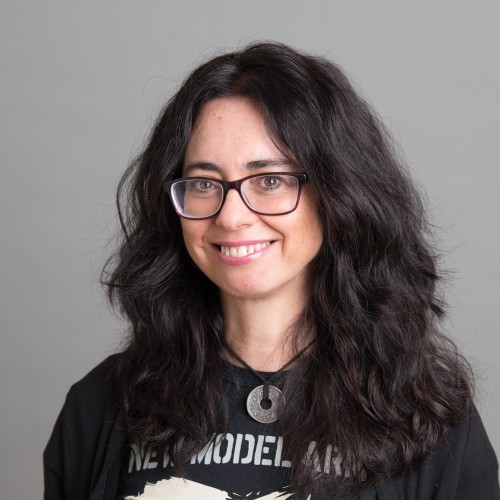
Phonons and Intermediate States in Antiferroelectric Perovskites
Dr. Elena Buixaderas Institute of Physics Department of Dielectrics Czech Academy of Sciences, Prague
Abstract
The study of antiferroelectrics has undergone a revival during the last years due to the possibility to use this type of materials in electronics, f.i. as energy storage or solid state cooling elements. This has prompted a new effort to understand the nature of the antiferroelectric phenomenon, but some new findings, instead of clarifying the phenomenon, has posed more questions about the true nature of antiferroelectricity and its theoretical description (coexistence of ferroelectricity, new ground states, possible ferrielectricity…) Because of this, it is necessary to understand better the archetype materials, as PbZrO3 and its solid solutions.
In this talk I will review past Raman and IR experiments in PbZrO3, and related solid solutions, as (PbZr,Ti)O3 with a small amount of Ti, which shows antiferroelectric behaviour, but they have also energetically available ferroelectric phases. The main lattice instabilities will be summarized (soft modes of seven different symmetries are present in the antiferroelectric phase of PbZrO3) and contextualized within a model where the coupling among them stabilize the antiferroelectric phase within a crystal which tends towards ferroelectricity. This model is supported by the effect of Ti in the PbZrO3 lattice, creating intermediate polar phases.
Crystals with ~1% of Ti undergo two phase transitions within the approximate temperature range 215–230°C (488–503 K). The higher temperature transition shows almost no thermal hysteresis (within one degree) and the way it develops across the crystal depends strongly on the defects present in the sample and the heating/cooling velocity. The lower temperature phase show much stronger thermal hysteresis (about 10 degrees), which indicates its first order character. These effect were confirmed by optical recordings and Raman spectroscopy. Regulating the heating/cooling velocity, we were able to stop both phase transitions during its course within the sample and make Raman measurements in different parts of the samples with different phases. This allowed to discern even different domain orientations in the intermediate phase and also in the antiferroelectric phase, both coexisting in the sample.
The influence of a stronger cationic substitution of Zr by Ti will be also presented and related to the behaviour of phonons and soft modes in ceramic samples, where other intermediate phases appear, showing a metastable behaviour hugely dependent of the experimental conditions.
References:
J. Hlinka, T. Ospachuk, E. Buixaderas et al., Multiple Soft-Mode Vibrations of Lead Zirconate, Phys. Rev. Lett 112, 197601 (2014).
E. Buixaderas, T. Ostapchuk, J. Kroupa et al. Catching the intermediate phase in PZT 99/1, Phase transitions 87, 1105 (2014).
F. Cordero, E. Buixaderas, C. Galassi, Damage from Coexistence of Ferroelectric and Antiferroelectric Domains and Clustering of O Vacancies in PZT, Materials 12, 957 (2019).
About the FLAME-inars
The FLAME-inars are organized by the collaborative project FLAME at TU Darmstadt, in which electronic-structure-property relationships are being developed and exploited to realize novel lead-free antiferroelectric compounds. The seminars will gather experts in processing, characterization and theory to discuss materials and applications, bulk and thin films, fundamental properties, electronic structure & defects, and related aspects.



